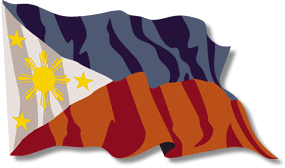 The Way We Were
The Way We WereStart here for a trip back to ancient Philippines. When you return, you might just feel prouder that you are Filipino.
* Laguna Copperplate Inscription. This document from 900 A.D. threatens to upset our long-held theories of Philippine history. It records the forgiveness of a debt incurred by a person named Namwaran and mentions placenames that still exist today, eleven centuries later.
* Literacy in Pre-Hispanic Philippines. When Miguel de Legazpi came to Manila, he found that almost everybody could read and write. This prompted the friars to publish a book in the native script in 1593, forty-seven years before the first book was published in the United States. However, within a century of the Spaniards' arrival, literacy in the Tagalog script that they came upon was gone. It was not until the end of Spanish reign that it became known that remote mountain groups had maintained their literacy in scripts similar to the Tagalog script. They are still in use today.
* Mystery Scripts of the Philippines. A few writing samples found in the Philippines are mysterious and undeciphered. What could they mean and are they for real? A secret society on the island of Bohol uses a strange script. Where did it come from and why is its structure very different from other Philippine scripts and, for that matter, other Southeast Asian scripts as well?
Here's something that's not really tackled in school. The Ancient History of the Philippines. This one showcases a bit of what the Philippines before the Spanish arrived. It's not really concise or encompassing but does gives us a view that the Philippines existed before being "discovered" by the Spanish.